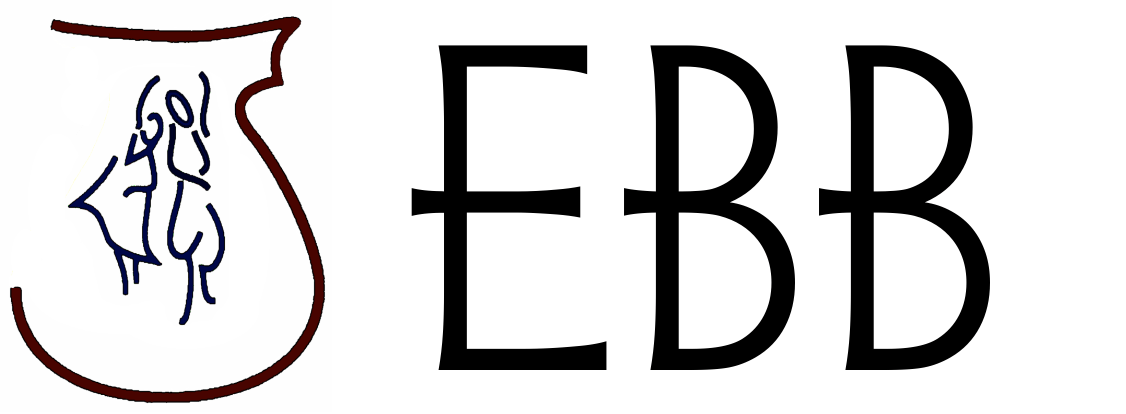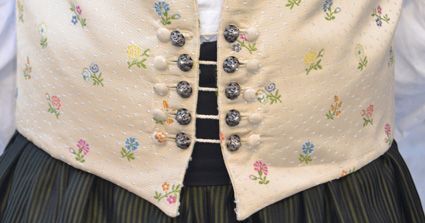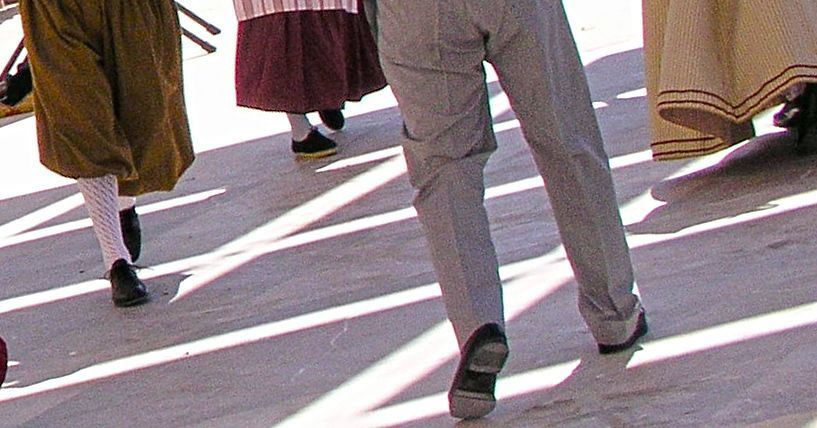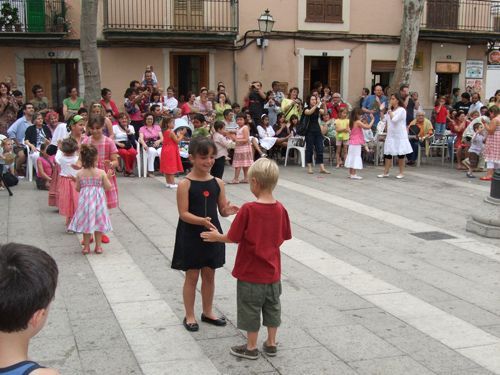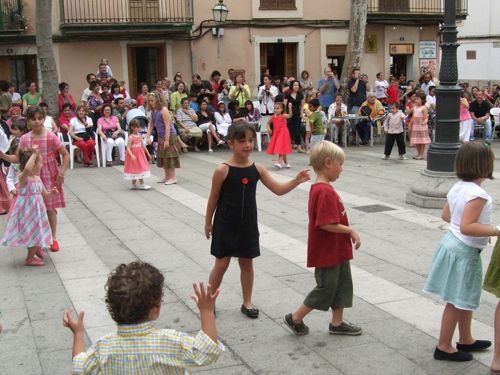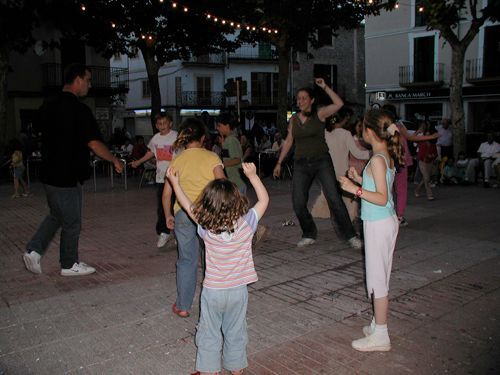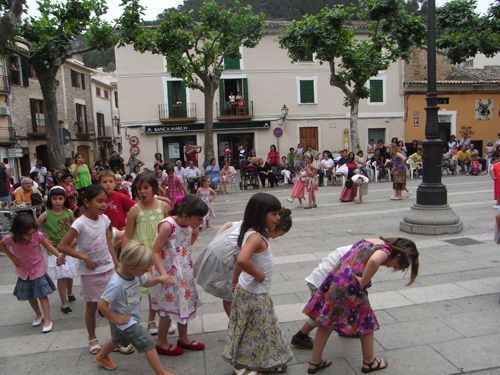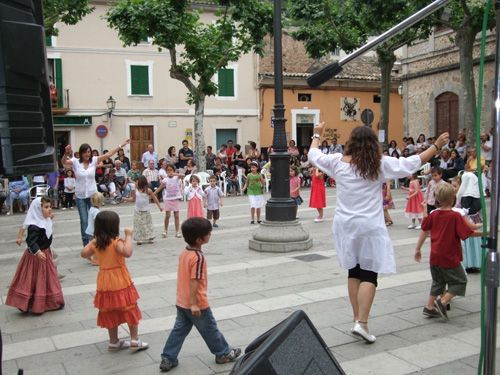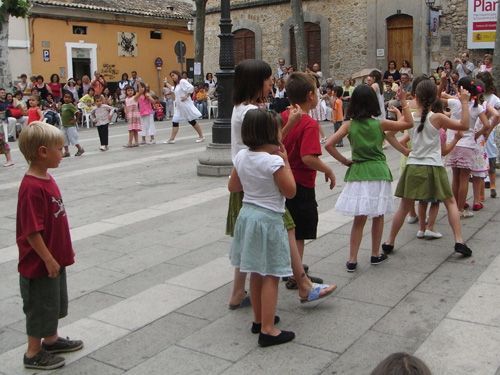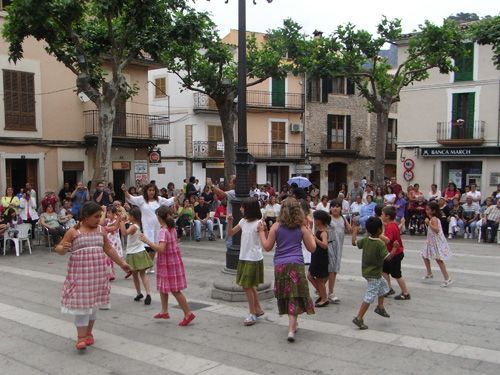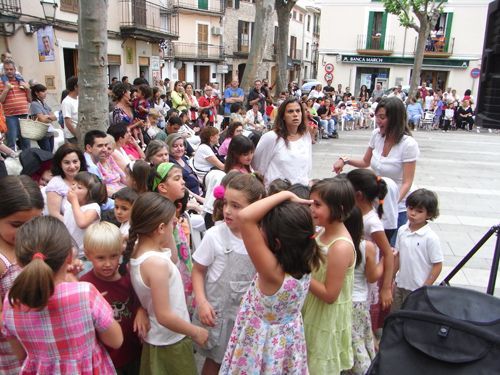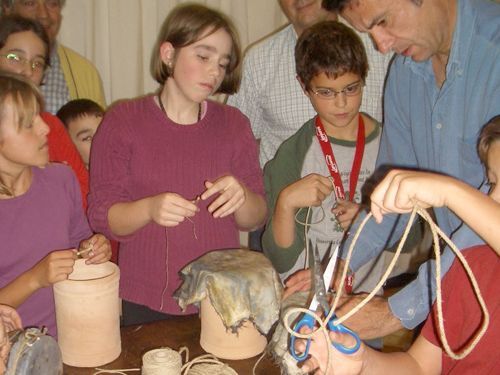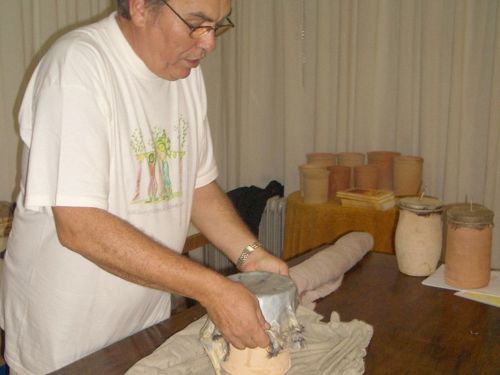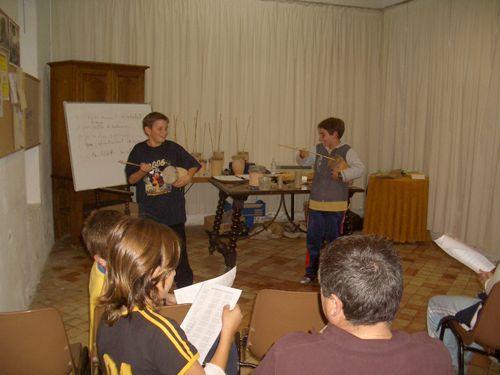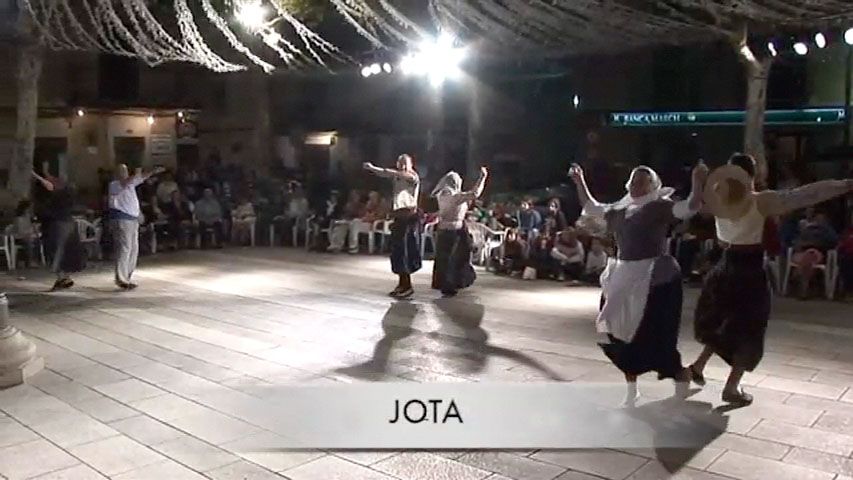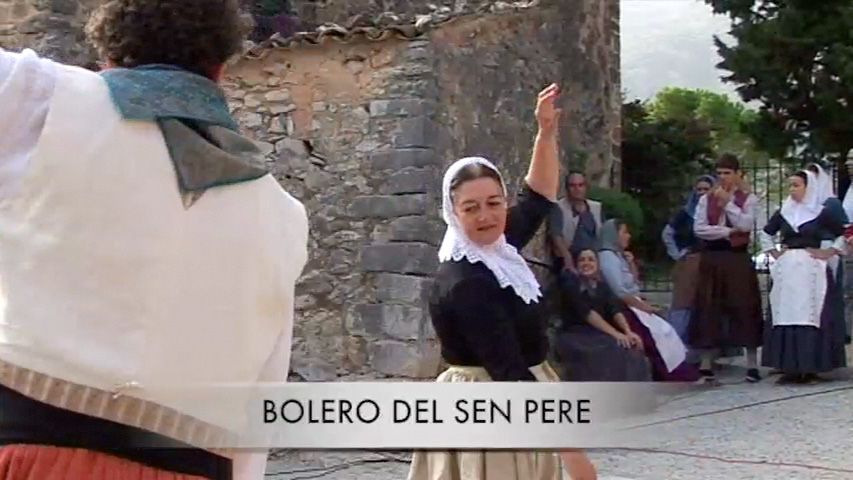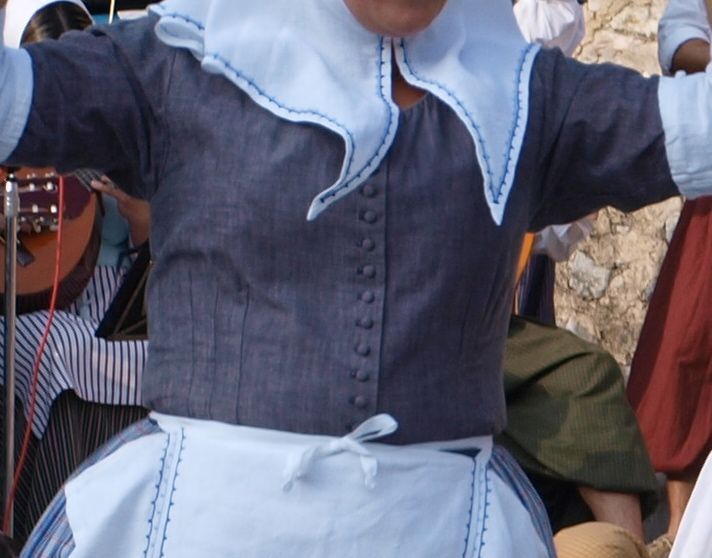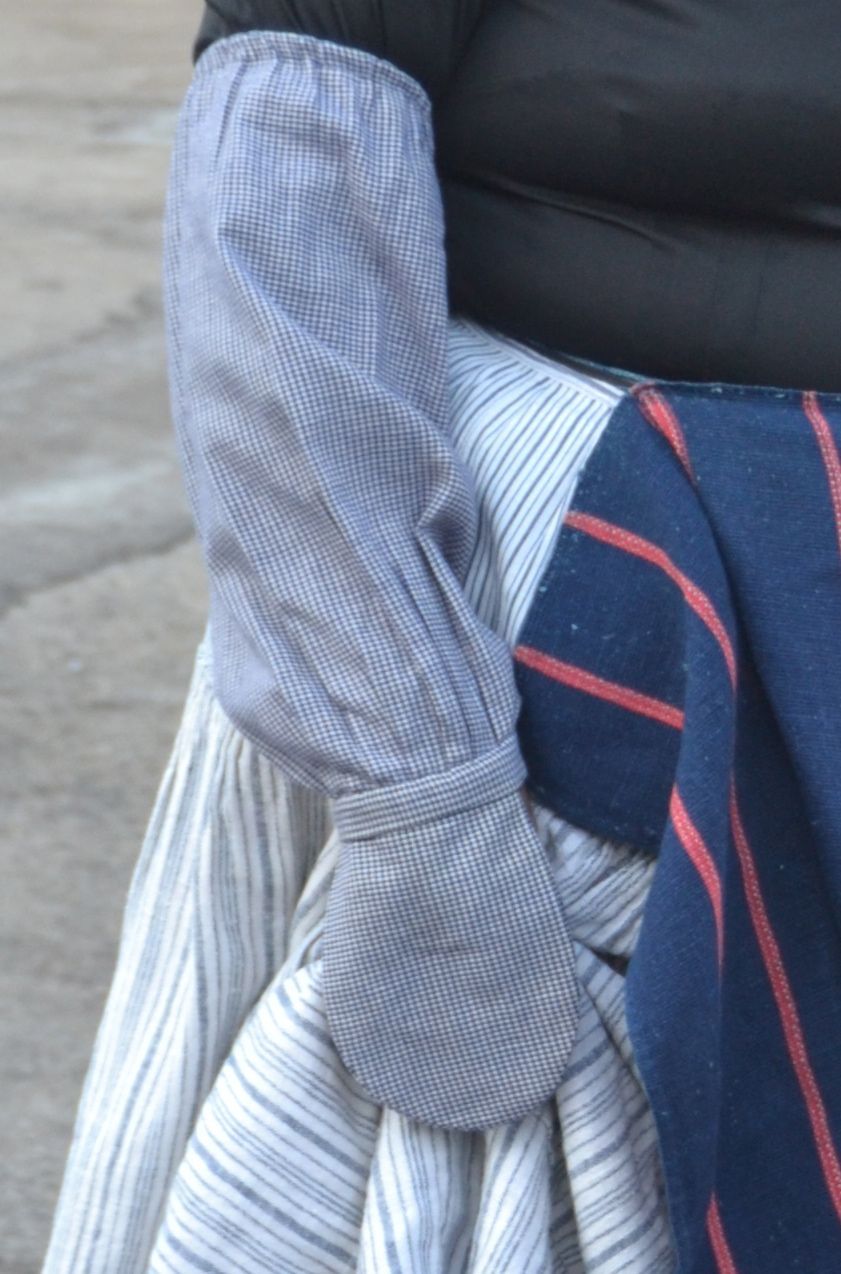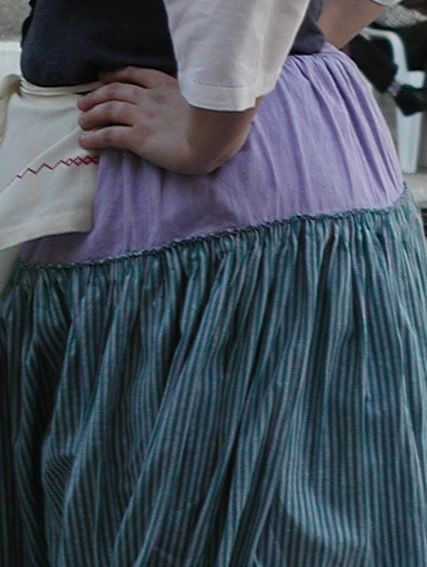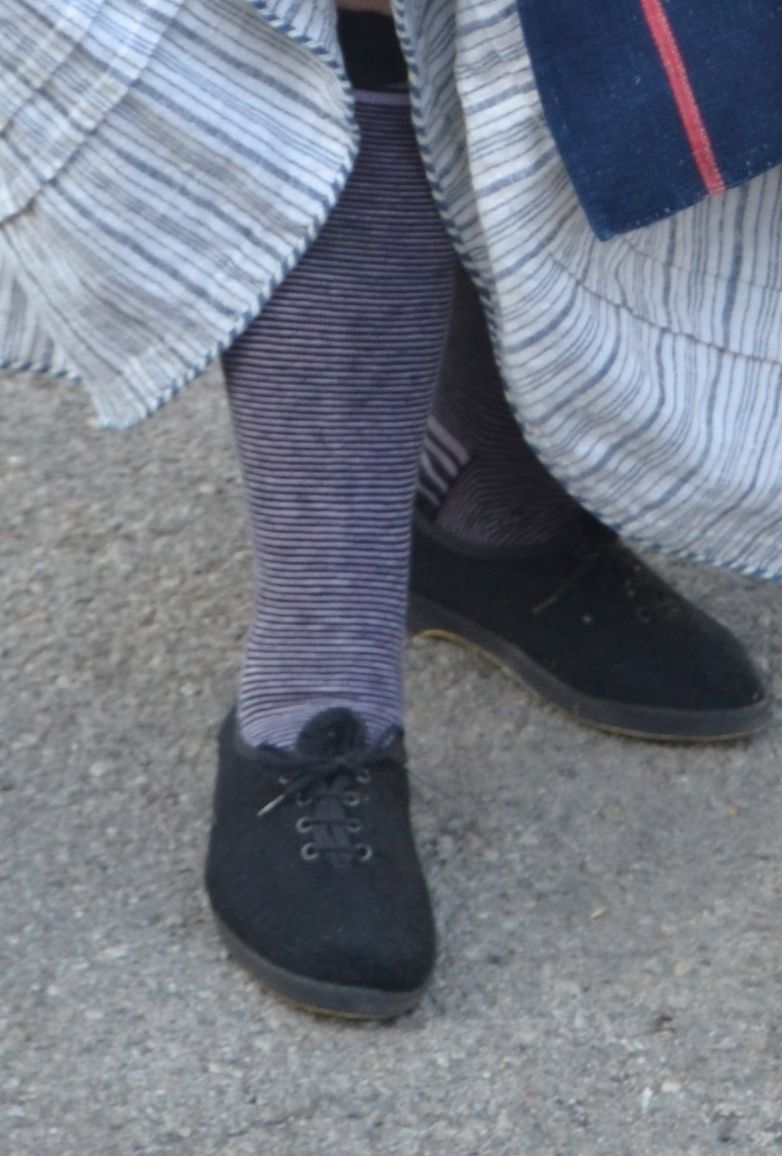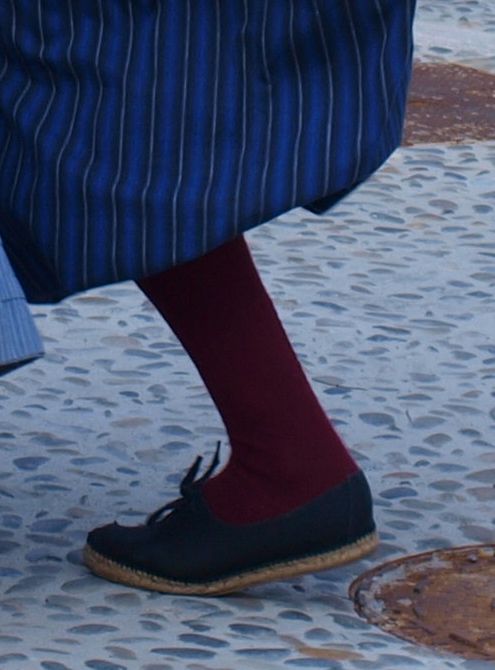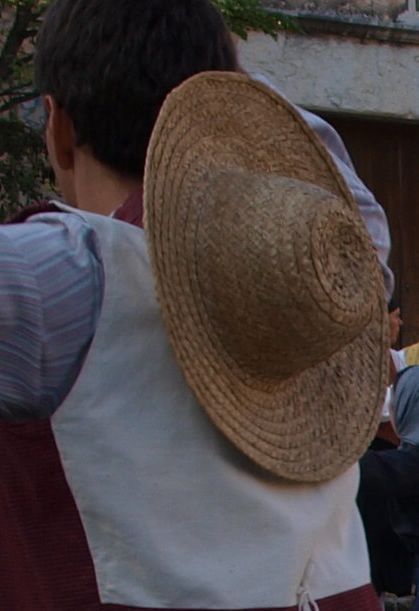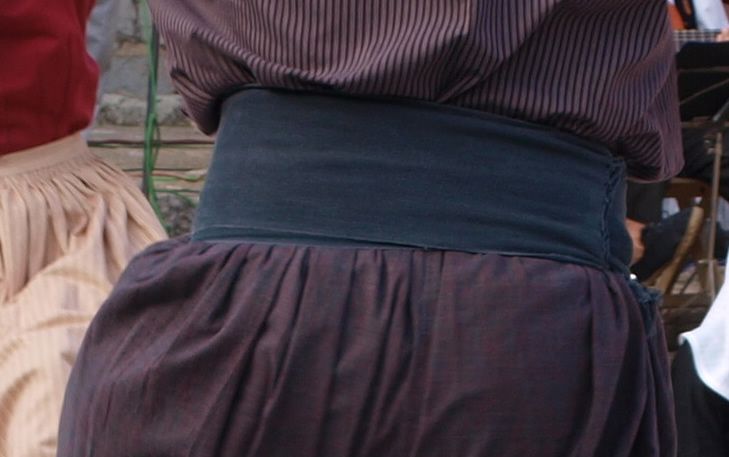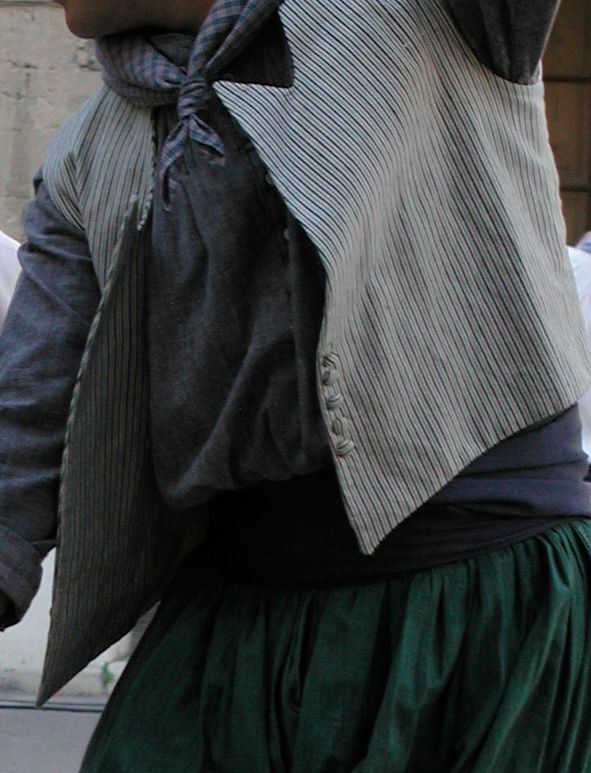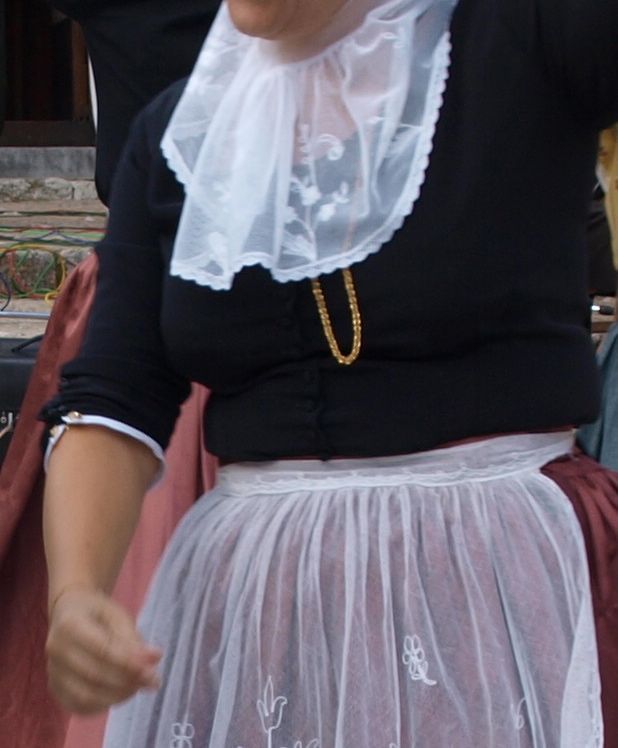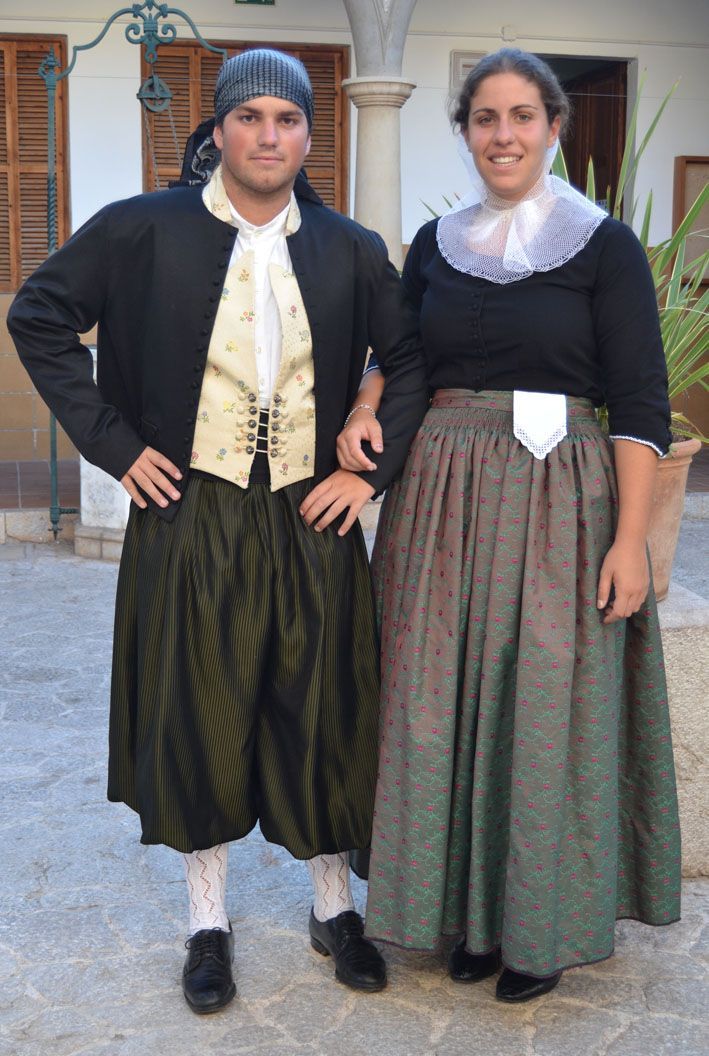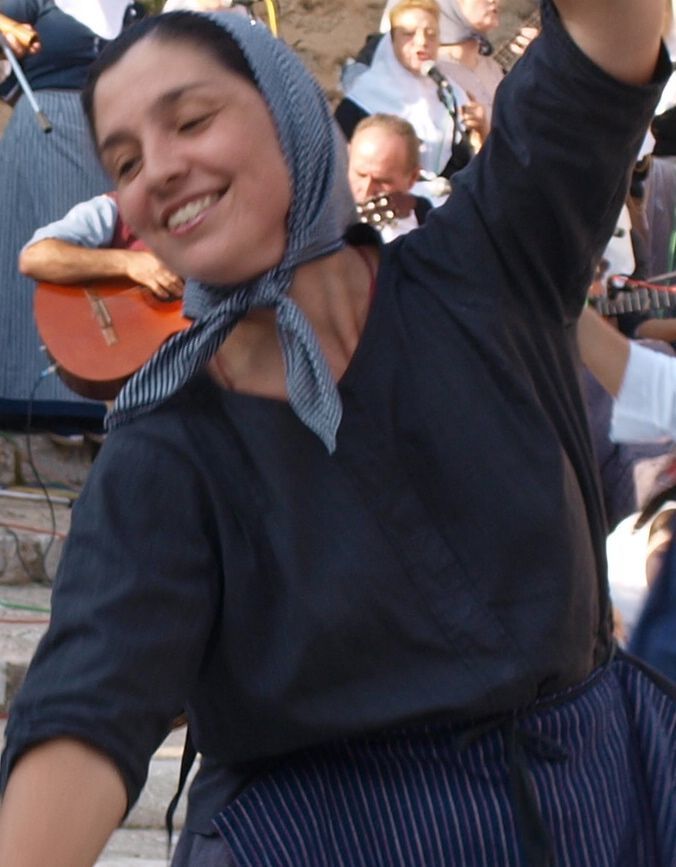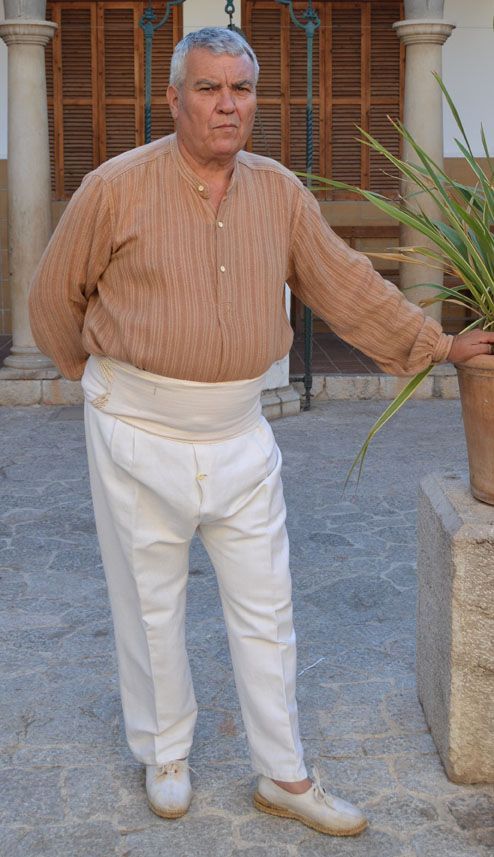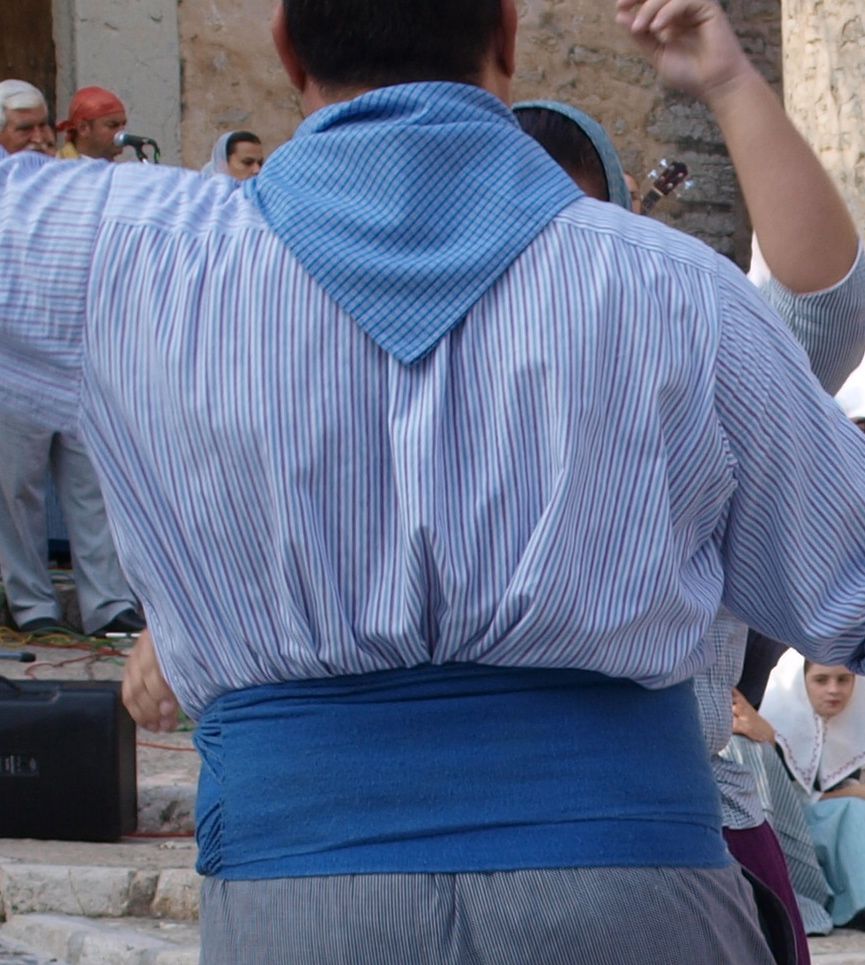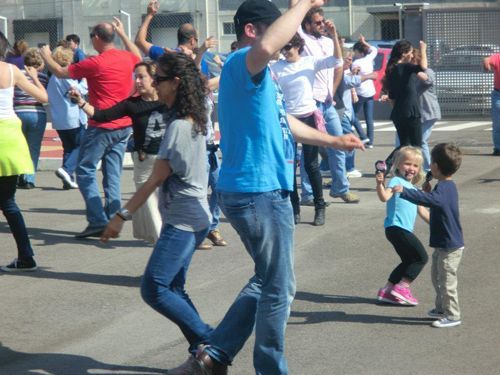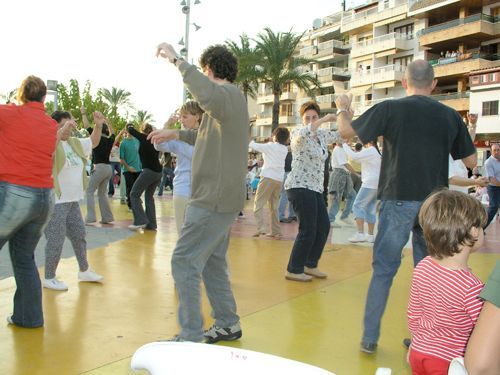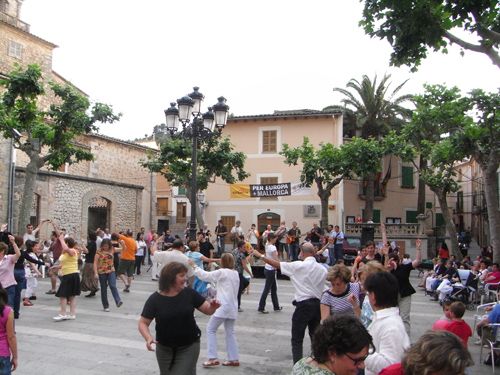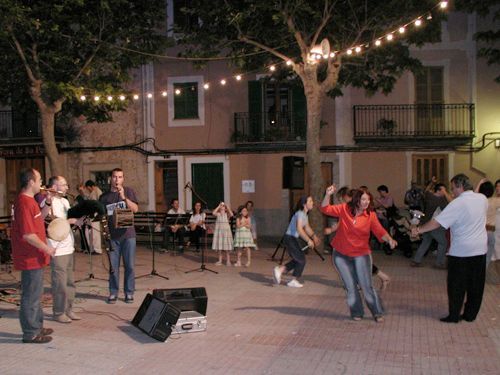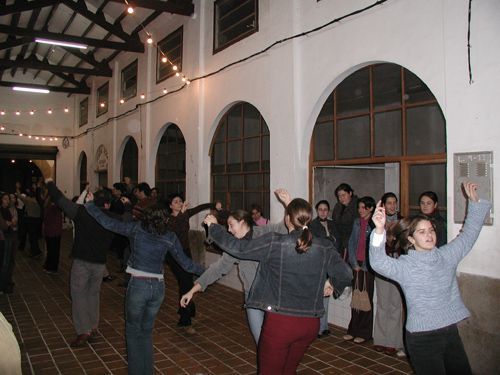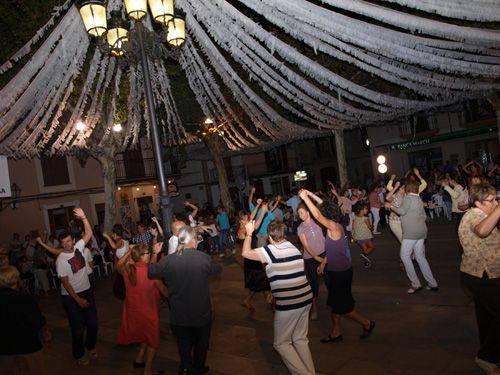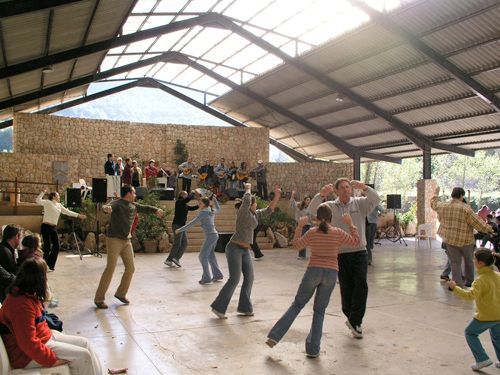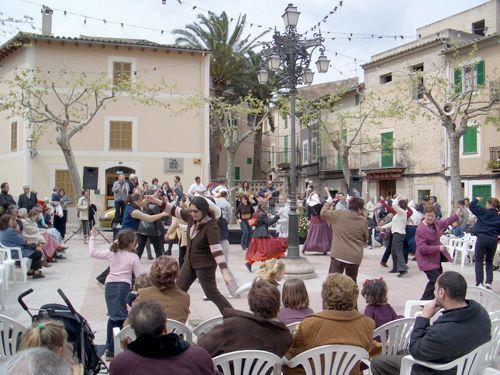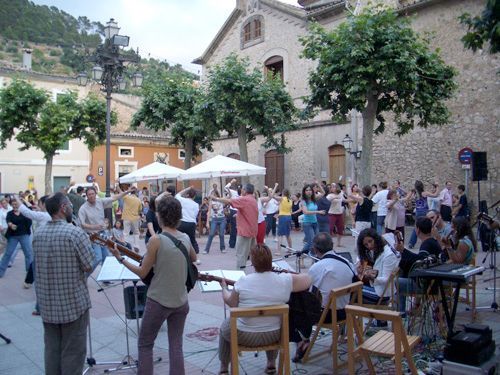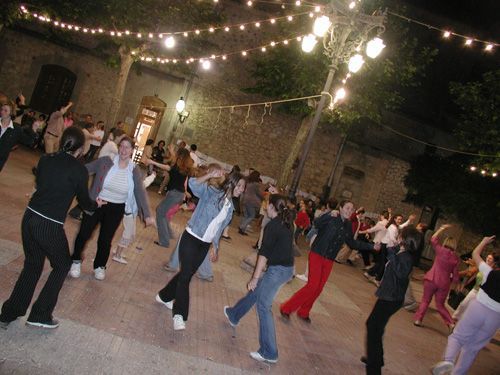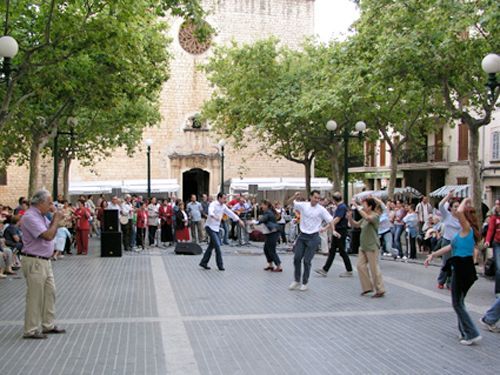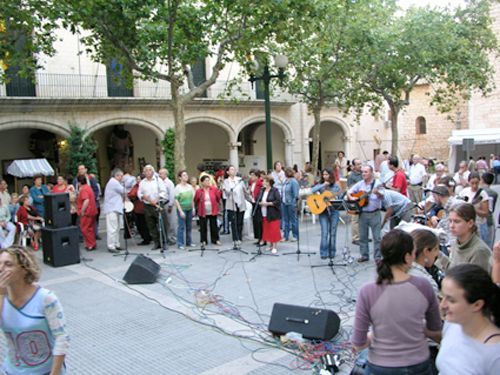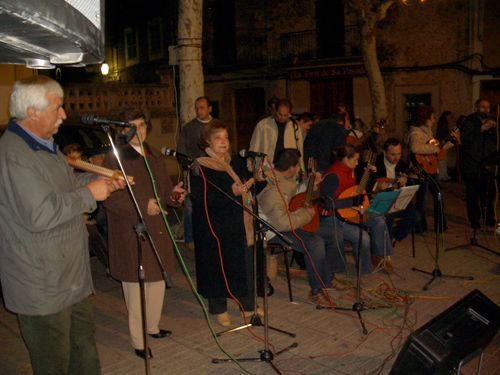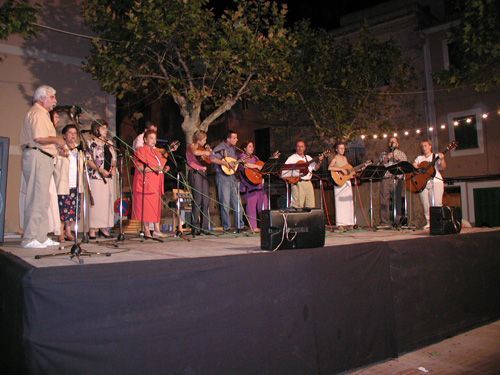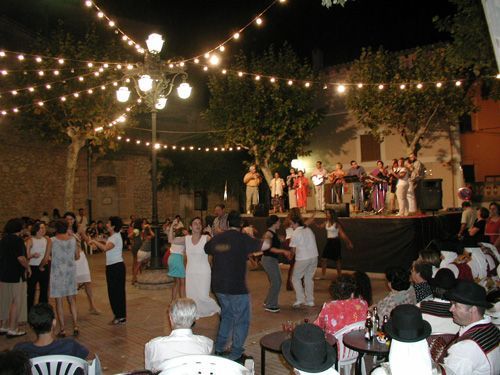TEACHING
The pedagogical task is determined by the different workshops:
MUSIC
Progression of learning stringed instruments (guitar, bandurria, lute and violin, etc.), xeremies, flabiol, tambourine and other traditional Mallorcan percussion instruments (chestnuts, rasquet, ferreguins, drum, etc.). All this harmonized with the different voices that make up the musical group.
INSTRUMENTS:
Chronologically we find:
- The group of xeremiers, with the xeremias, the flabiol and tambourine. They usually accompany the square dance.
- Guiterra, guitarró and violin to accompany the singers.
- The current rondalles with bandurries, lutes and sweet flutes.
- Percussions, which have always been present, castanets, ferreguins, ossos, xorrac, tambourine, drums , etc.
CLOTHES
Recovery of original pieces from the 18th and 19th centuries for their reproduction and adaptation to the divulgative task, in order to highlight traditional clothing with its accessories.
BALLS
First of all, we continue the tradition of learning square dancing as a fun element of the party. This task is developed for children and adults, in the annual and monographic courses organized by the Bunyola Dance School. Secondly, and through the established dissemination group, shows are performed, also as a fun activity, but above all, with a didactic character, where the whole set of music, dance and clothing is combined.
Bolero. Considering the dance that arrives later in Mallorca.
It is a partner dance and we generally find the following structure:
- A musical introduction not danced.
- A greeting as an introduction to the dance.
- Three equal musical parts that also correspond to three points of equal dances, always linked with specific measures that are the nexus between one part and the other, where usually the couple exchanges place.
- Some measures that determine the end of the dance.
- Stanzas of four verses of 6 and 4 syllables. We can say that it is a school dance, with the same music each village has made its own bolero, in a way Once established, the couple follows what they have learned previously.
Jota. Coming from the peninsula around the end of the 18th century, it took root in Mallorca becoming more leisurely and not as loud as Aragonese, establishing regional differences within Mallorca (oral transmission).
Basically we find the following structure:
- An unsung introduction (which may coincide with the refrain).
- Stanza (four verses) sung-refrain-stanza-refrain-stanza-final refrain.
- It can also be of two stanzas and three refrains, and other combinations, for example jotes instrumental The dance is always a couple, where the woman sets the pace of the dance by making combinations based on a basic repertoire of points and variations. A playful situation is created where the man tries to follow the woman who will try to deceive him according to his own creativity.
Mateixa. We distinguish the same ones from Levant with combinations of same and copeo (verses of 5 and 6 syllables), and the same ones from Tramuntana, specific to our region (verses of 6 and 7 syllables).
Structure of the Tramuntana songs:
- An unsung introduction.- Alternating stanzas of four lines of 6 and 7 syllables (jota).
- As a variation there are songs that alternate stanzas of 7 lines with a musical stanza.
It is a partner dance with the same characteristics as the jota. In Bunyola they come from the old folkloric groups structured with two dancing couples.
Copeo. Having in common with the jotas and the ternary rhythm itself, it differs both in the metric of the sung stanzas, as well as in the form of dancing and the speed that each dance reaches. Structure of the mountain copeo:- Alternating the stanza with the refrain, both sung.- Stanza of four verses of 5 syllables. It is a dance in pairs with the same characteristics as the jota.
Fandango. Arriving from the south of the peninsula, it takes root in different ways in each of the islands of Mallorca and Menorca. Preserved in the Levant, they were recovered around 1990, currently danced all over Mallorca.
Structure:
- Four verses alternating with stanzas, sometimes ending in a refrain and others not.
- Stanzas of four lines of 7 syllables. It is a dance in pairs with the same characteristics as the jota.
SHOW
Boleros, jotes, copeos, sames and fandangos with their variants are a sample of our traditional dances, as well as the lively music of string rondalla, flabiol, xeremies, percussion... and the songs that accompany most of these dances, referred to exclusively in the folklore of Mallorca and more specifically in the mountainous region of Bunyola
VÍDEOS
CLOTHES
XVIII CENTURY
JOB WOMAN
Briefs: Underwear or underwear. Made in linen or cotton, laced below the knee. They can wear lace ornaments, streaks or discreet embroidery.Petticoats or underskirts: They are usually colored (squares, stripes, ...). They can take two or three to give volume to the skirt above. They are gathered at the waist, fastened with a seam. At the bottom, they wear lace or lace. Bodice: Underwear that covers the body, below the jipón. Made of cotton, or white thread and ornamented with lace, tavels, laces, embroidery, etc. Skirts made of cotton or cloth (linen) made in two pieces sewn with the particular crease that is called crony
Apron: Square piece with seam sewn to a piece of pavement to protect the skirt. Whitish for housework and dark for field work. Gipó: Clothing that covers the woman's body. Colored or black, made of cotton or wool fabric. Fitted to the body with sleeves up to the elbow. Sleeves: Fake sleeves, in list clothing, to protect the arms and hands from the sun when working in the field. Sleeves: Short sleeves in cotton or thread clothing to protect the sleeves from the sun gipón when he was around the house. Rebosillo: Piece that covers the head. They are made of white cotton with small embroideries or prints. Footwear: Espadrilles with esparto sole and canvas. Tights: They are worn in winter. They are made of colored or black wool, smooth or knitted.
JOB MAN
Shorts: Because of the particular shape of this garment, they are called shorts with puffs or wide. They go below the knee where they are fastened with stripes. Made in cotton fabrics, cloth, list,...Gardapits: Covers the man's body, over the shirt. Made with two types of clothes: one for the front part, usually of list, cotton or cloth, brushed or colored, and another for the back, in thinner clothes, cotton or list of one color. They don't have a neck. The composition of the buttons, in pairs, is called collada. They are made of bone, thread, or mother-of-pearl. Shirt: Piece that covers the man's body. Made in cotton clothes, list or a mixture of cotton and linen, in plain or twilled dark tones. Scarf: Square in cotton fabric or list that is put on the head or tied around the neck. Band: Also called a trocha, it is a piece of a palm or a palm and a half in width by about fourteen in length. It is tied at the waist, doing the functions of holding the shorts and protecting the belly and back. Hat: To protect from the sun. Made of palm Footwear: Espadrilles with esparto sole and canvas Tights: Wool dyed in dark tones.
MOVED WOMAN
Briefs: Underwear or underwear. Made of white cotton cloth, thread, cotton and thread mix, ... corded with seam below the knee. They have lace ornaments, embroidery or lace, usually very elaborate. Petticoats or underskirts: Made of white cotton or thread. Generally, they take two or three to give volume to the upper skirt. They are gathered at the waist, fastened with a seam. At the bottom, adorned with all kinds of embroidery, lace, openwork, laces, ... according to the person's taste or status. Skirt: Clothing that covers from the waist to the ankles. Made in silk, damask, brocade,... depending on the person's purchasing power or status. They are usually all gathered at the waist or with pleats at the front and gathered at the back. Apron: If they wore one, it was a piece of thin cotton, silk or linen very elaborate in embroidery or stripes. Gipó: Clothing that covers the woman's body . Colored or black, made of silk fabric or a mixture of silk and cotton. Fitted to the body with sleeves up to the elbow where they end with a lace or band. The button: set of five buttons plus two at the end, in pairs, which make the collar, they are made in gold or silver and rhinestones. Frill/frill: Piece that covers the head. They are made of fine thread fabric, muslin, tulle,... with embroidery or lace. Footwear: Shoes covered with dyed leather and leather soles, generally with a bit of trim, fastened with laces or buckles. Pantyhose: Woven with white or dyed cotton thread, made with plain pantyhose or with openwork.
MOVED MAN
Shorts: Because of the particular shape of this garment, they are called shorts with puffs or wide. They go below the knee where they are fastened with stripes. Made with silk clothes, a mixture of silk and cotton, brocade, damask, ...Gardapits: Covers the man's body, over the shirt. Made with two types of clothes: one for the front, usually silk, brocade, damask,... and another for the back in thinner cotton or thread of a single color. They don't have a neck. The composition of the buttons, in pairs, is called collada. They are made of gold, silver,... Shirt: Piece that covers the man's body. Made of cotton, yarn or a mixture of cotton and linen, usually white. Scarf: Square in silk fabric, indiana, thread,... that is put on the head or tied around the neck. Band: Also called trocha, it is a piece of a width or a width of about fourteen inches. It is tied at the waist, performing the functions of holding the shorts while protecting the belly and back. Hat: To protect from the sun. Made of thin palm or felt. Footwear: Closed shoes of dyed leather and leather sole, flat, fastened with laces or buckles. Pantyhose: Wool or cotton, plain or dyed, made in smooth or openwork pantyhose.
19th CENTURY
JOB WOMAN
Briefs: Underwear or underwear. Made in linen or cotton. They can wear lace ornaments, streaks or discreet embroidery.Petticoats or underskirts: They are usually colored (squares, stripes, ...). They can take two. Pleats at the front and gathered with a seam at the back. At the bottom, they have lace, lace, openwork, slits, .... Skirts: Skirts in cotton or cloth (linen). Made by making folds around the waist Apron: Square piece of cloth with a seam sewn to a piece of pavement to protect the skirt from above or in a rectangular shape with an ornamented list with entrances, seam.... Whitish for housework and dark for field work.Marinera: Clothing that covers the woman's body. With sleeves up to the elbow or in half-sleeves, looser than the gipon. Manegots: Fake sleeves in list clothing to protect the arms and hands from the sun when working in the field. Mannequins: Short sleeves in cotton or thread clothing to protect the hoses of the gipón when he was around the house. Rebosillo: Piece that covers the head. They are made of white cotton with small embroideries or prints. Scarf: In cotton clothes, Indian, list, ... Covers the head and stops at the bar. Shoes: Espadrilles with esparto sole and canvas. Tights: Wear in winter They are colored or black wool.
JOB MAN
Shorts: Made with list clothes, indiana, a mixture of cotton and thread,.... They have a straight cut and fasten at the waist with buttons. Bibs: Covers the man's body, over the shirt. Made with two types of clothes: one for the front part, usually of list, cotton or cloth, brushed or colored, and another for the back part in thinner cotton or list of one color. The composition of the buttons, in pairs, is called collada. They are made of bone, thread, or mother-of-pearl. Shirt: Piece that covers the man's body. Made in cotton clothes, list or a mixture of cotton and linen, in plain or twilled dark tones. Scarf: Square in cotton fabric or list that is put on the head or tied around the neck. Band: Also called a trocha, it is a piece of a palm or a palm and a half in width by about fourteen in length. It is tied at the waist, doing the functions of holding the shorts while protecting the belly and the back. Hat: To protect from the sun. Made of palm. Footwear: Espadrilles with esparto sole and canvas. Tights: Wool dyed in dark tones.
MOVED WOMAN
Briefs: Underwear or underwear. Made of white cotton, thread, a mixture of cotton and thread, ... up to above the knee. They have lace ornaments, embroidery or lace, usually very elaborate.
Petticoats or underskirts: Made of white cotton or thread. Generally, they take two or three to give volume to the upper skirt. They are pleated at the front of the waist and gathered at the back, fastened with a seam. At the bottom, adorned with all kinds of embroidery, lace, openwork or lace, according to the person's taste or status. Skirt: Clothes that cover from the waist to the ankles. Made in silk, damask, brocade,... depending on the person's purchasing power or status. Made with smooth or pleated pieces at the front and with frills and wrinkles at the back. Apron: If they wore one, it was a piece of fine cotton, silk, linen, tulle, ... very elaborate in embroidery or randes.Gipó: Clothing that covers the woman's body. Colored or black, made of silk fabric or a mixture of silk and cotton. Fitted to the body with sleeves up to the elbow where they end with a lace or band. The buttoning: set of five buttons plus two at the end, in pairs, which make the collar, are worked in gold and rhinestones. Frill/frill: Piece that covers the head. They are made of fine thread fabric, muslin, tulle, mesh, ... with embroidery or stripes. Footwear: Shoes covered in dyed leather and leather sole, generally with a bit of trim, fastened with laces or buckles. Pantyhose: Woven with white or dyed cotton thread, made with plain pantyhose or with openwork.
MOVED MAN
Shorts: Made with wool, indiana, cotton and thread mix,... They are straight cut and fasten at the waist with buttons and tucks. Bibs: Covers the man's body, over the shirt. Made with two types of clothes: one for the front, usually silk, indiana, wool,... with prints, black or colored clothes, and another for the back in thinner clothes made of cotton, lining, list , of a single color. Two collars and buttons in a row. Shirt: Piece that covers the man's body. Made in cotton clothes, a mixture of cotton and linen, thread, white, with the hem decorated with tavels, bastes, frills,... . Concealments: Wide strips of Y-shaped elastic, with eyelets at the ends, which are attached to the buttons of the shorts. Hat: To protect from the sun. Made of palm.Shoes: Closed shoes of dyed leather and leather sole, flat, fastened with laces or buckles.Clothes: Wool or cotton, white or dyed in dark tones.
BALLADS
From the beginning, one of the goals of the association has been the recovery of the square dance, with all that it entails involving people in the party: dancing, playing, singing, enjoying in general.
In accordance with our principles, the Dance School has carried out a task of global education and subsequent dissemination in order to highlight different aspects of our folklore, encouraging popular participation in the ballads in Bunyola and throughout Mallorca , combining the pedagogical task with the animation of parties and evenings. In the defense of Popular Culture, the Dance School already subscribed to a statement in 1987 that "...We must do show dances and popular dances, however, always being aware of what is being done, in order to achieve the dignity of dance in all aspects and to take the commitment that is needed on the part of the people who love dance, since as much a thing as the "another is disclosure, as long as it is done with the necessary dignity."



